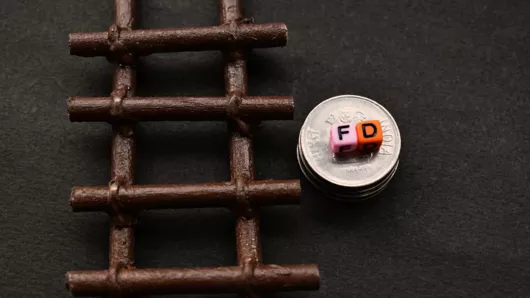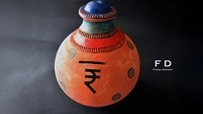How to Use FD Laddering Strategy to Maximise Your Returns
April 24, 2025

Most of us invest in fixed income instruments like Fixed Deposits, but very few invest ‘smartly’. But what’s ‘smart investing’ that too in terms of FD investments? Well, investing wisely requires not only choosing the right financial products but also strategising how to maximise returns while managing risk and liquidity. This is where the FD laddering strategy comes in.
By breaking your investments into multiple fixed deposits (FDs) with varying maturity periods, you can balance consistent returns while maintaining liquidity. In this article, we have explored the concept of FD laddering, its benefits and how to set it up.
What is FD Laddering?
The FD laddering strategy involves spreading your corpus across multiple FDs with different maturity periods. This is in contrary to normal FD investments where you invest in a single FD for a longer period. The laddering approach reduces the risk of locking in your investments for a long time and allows you to potentially earn higher returns over the course of time.
Understanding FD Laddering with an Example
Let’s understand the concept of FD laddering with an example. Assume you have a total of ₹1 lakh to invest in Fixed Deposits. Instead of putting it into one FD, divide it into multiple FDs with staggered maturity periods. We have considered a constant 8.25% interest rate for ease of understanding. Ideally, for staggered periods, you get both – lower and higher rates. For example, Ujjivan SFB’s Digital FD offers 8.05% p.a. for an 18-month FD and 7.90% for an FD ranging from 12 months to 18 months.
Anyway, here’s how you could set up your laddering strategy.
First FD: Invest ₹25,000 in a 1-year FD at 8.25% p.a. Upon calculation, the maturity amount would be ₹27062.50. Use a Fixed Deposit ROI Calculator to check your returns quickly.
Second FD: Invest ₹25,000 in a 2-year FD at 8%. This FD matures after 2 years, providing a higher interest than the 1-year FD. In this case, the maturity amount would come up to ₹29,295.16.
Third FD: Invest ₹25,000 in a 3 year FD at 8.25%. The maturity amount would be ₹31,712.27.
Fourth FD: You have another ₹25,000 to invest. Invest it in a 4-year FD at 8.25%. The maturity amount would be ₹34,322.83.
The combined returns of your investment would be ₹1,23,392.76. Now if you had invested in a single FD for 1 year, you would have gotten returns of ₹1,08,250.
Now, you may ask why not invest in a 5 year FD at 8.25% p.a. Well, the benefit of laddering is you get to re-invest every time your FD matures. For example, once your 1st FD matures, you can re-invest it for 2 years. Once your 2nd FD matures, you can reinvest it for 3 years and so on, so forth. The overall returns would be quite higher compared to one-time investment.
Also, since the maturity period is staggered, you get to enjoy higher liquidity.
Benefits of FD Laddering
FD laddering offers several benefits that can help you maximise FD returns while managing risk and maintaining liquidity. Let's delve into them:
Enhanced Liquidity: By staggering the maturities of your FDs, you ensure regular access to funds, providing greater liquidity and flexibility to meet short-term financial needs.
Reduced Reinvestment Risk: With FDs maturing at different times, you can reinvest the principal amount at prevailing interest rates, reducing the impact of potential reinvestment risks associated with long-term FDs.
Optimised Returns: Diversifying your investments across multiple FDs with varying maturity dates allows you to take advantage of changing interest rates and re-investments, thereby optimising overall returns.
Addressing Reduced Interest Rate Risk: In a fluctuating interest rate environment, FD laddering helps mitigate the risk of reduced interest rates. Even if rates decline, you can reinvest maturing deposits at potentially higher rates, thereby maintaining or increasing your overall returns.
Encouraging Financial Discipline: FD laddering promotes financial discipline by discouraging impulsive withdrawals and fostering long-term planning. It helps you stay focused on your financial goals and avoid unnecessary expenses.
Tax Efficiency: Staggering the maturity of FDs helps manage tax liabilities more effectively. By spreading out FD maturities across different financial years, you can mitigate the impact of taxable interest income, thereby optimising tax efficiency.
Setting up an FD Laddering Strategy
To set up an effective FD laddering strategy, follow these steps:
Assess Financial Goals and Investment Horizons: Evaluate your financial objectives and determine your investment horizon. Consider factors such as short-term liquidity needs, future expenses, and your risk tolerance level.
Segment Your Investment: Divide your total investment amount into different segments, each representing an FD with varying maturity periods. This segmentation creates a ladder-like structure, allowing you to spread your funds effectively.
Select Maturity Periods: Choose suitable maturity periods for each deposit based on your financial goals. For instance, opt for one deposit maturing in 6 months, another in a year, and so on, to align with your specific requirements. Use online FD calculators to compare options and select the most suitable ones.
Maintain Consistency: Regularly review the FD maturity dates and reinvest the principal amount along with the interest earned in new FDs with longer maturity periods. This approach helps you continuously extend the FD laddering duration and maximise your FD returns over time.
5 Tips to Maximise FD Returns
To make the most of your FD laddering strategy and maximise returns, consider the following tips:
Monitor Interest Rate Trends: Keep an eye on interest rate trends and forecasts to identify opportunities to reinvest at higher rates when your deposits mature.
Reinvest Maturities: As each FD matures, reinvest the proceeds into new FDs with longer tenures in the ladder for potentially higher returns.
Explore Different FD Options: Compare interest rates across various banks and financial institutions to find the best rates for your FDs. By splitting your investments across different issuers, you can access the best rates available.
Seek Expert Advice: If you are unsure about the best approach for your specific financial goals, consult with a financial advisor who can provide personalised insights and guidance.
Final Thoughts
The FD laddering strategy offers a practical way to maximise FD returns while maintaining liquidity. By diversifying your investments across multiple FDs with different maturity periods, you can optimise overall returns by taking advantage of changing interest rates.
Remember to regularly monitor interest rate trends, reinvest maturities, and assess your liquidity needs to make the most of this strategy. To explore further and apply this strategy in practice, book an FD with Ujjivan SFB. Take control of your finances and make your savings work harder for you with FD laddering.
Disclaimer:
The contents herein are only for informational purposes and generic in nature. The content does not amount to an offer, invitation or solicitation of any kind to buy or sell, and are not intended to create any legal rights or obligations. This information is subject to updation, completion, amendment and verification without notice. The contents herein are also subject to other product-specific terms and conditions, as well as any applicable third-party terms and conditions, for which Ujjivan Small Finance Bank assumes no responsibility or liability.
Nothing contained herein is intended to constitute financial, investment, legal, tax, or any other professional advice or opinion. Please obtain professional advice before making investment or any other decisions. Any investment decisions that may be made by the you shall be at your own sole discretion, independent analysis and evaluation of the risks involved. The use of any information set out in this document is entirely at the user’s own risk. Ujjivan Small Finance Bank Limited makes no representation or warranty, express or implied, as to the accuracy and completeness for any information herein. The Bank disclaims any and all liability for any loss or damage (direct, indirect, consequential, or otherwise) incurred by you due to use of or due to investment, product application decisions made by you on the basis of the contents herein. While the information is prepared in good faith from sources deemed reliable (including public sources), the Bank disclaims any liability with respect to accuracy of information or any error or omission or any loss or damage incurred by anyone in reliance on the contents herein, in any manner whatsoever.
To know more about Ujjivan Small Finance Bank Products Visit:"https://www.ujjivansfb.in"
All intellectual property rights, including copyrights, trademarks, and other proprietary rights, pertaining to the content and materials displayed herein, belong
to Ujjivan Small Finance Bank Limited or its licensors. Unauthorised use or misuse of any intellectual property, or other content displayed herein is strictly prohibited and the same is not intended for distribution to, or use by, any person in any jurisdiction where such distribution or use would (by reason of that person’s nationality, residence or otherwise) be contrary to law or registration or would subject Ujjivan Small Finance Bank Limited or its affiliates to any licensing or registration requirements.
FAQs
1. What is FD laddering?
FD laddering involves dividing your investment into multiple FDs with different maturity periods to balance returns and liquidity.
2. How does FD laddering maximise returns?
By diversifying across FDs with varying maturity dates, you can take advantage of changing interest rates and reinvest at higher rates when deposits mature.
3. Can I customise the maturity periods in an FD ladder?
Yes, you can customise the maturity periods according to your financial goals and investment horizon.
4. Is FD laddering suitable for short-term goals?
Yes, you can allocate a portion of your investment to short-term FDs in the ladder to meet specific short-term goals.
5. Are there any risks associated with FD laddering?
While FD laddering reduces certain risks like reinvestment risk, it is essential to consider the overall interest rate environment and potential changes.
6. How can I calculate my potential returns with an FD ladder?
Utilise online FD calculators to input different maturity periods and calculate potential returns based on prevailing interest rates.
7. Can I combine different banks' FDs in an FD ladder?
Yes, you can distribute your investments across various banks and financial institutions to access the best interest rates available.
8. Does FD laddering offer any tax benefits?
Staggering the maturity of your FDs helps manage tax liabilities more effectively by mitigating the impact of taxable interest income.
9. Is FD laddering suitable for every investor?
FD laddering can be beneficial for investors looking to balance returns, liquidity, and risk. However, it is essential to assess individual financial goals and risk tolerance.
Latest Blogs

How to Link PAN with Aadhaar: Step-by-Step Guide & Consequences of Not Linking
Linking your Permanent Account Number (PAN) with your Aadhaar is no longer just a best practice.

Annual Information Statement (AIS): A Complete Guide for Stress-Free ITR Filing
India’s tax season is in its final stretch.

ITR-1 (Sahaj) Restrictions: Income Sources Not Allowed & Filing Rules
With just a few days left before the 15 September 2025 deadline for filing Income Tax Returns (ITRs) for Assessment Year (AY) 2025-26, many taxpayers are rushing to submit their forms online.

GST Rate Cut on Electronics: What It Means for Consumers and Retailers
India’s Goods and Services Tax (GST) system has entered a new era with the rollout of GST 2.0, effective from September 22, 2025.

Banking Safety Guide: How to Avoid QR Code Frauds While Making Payments
India’s love for QR code payments has made transactions lightning-fast, but also opened a new front for cybercriminals.





